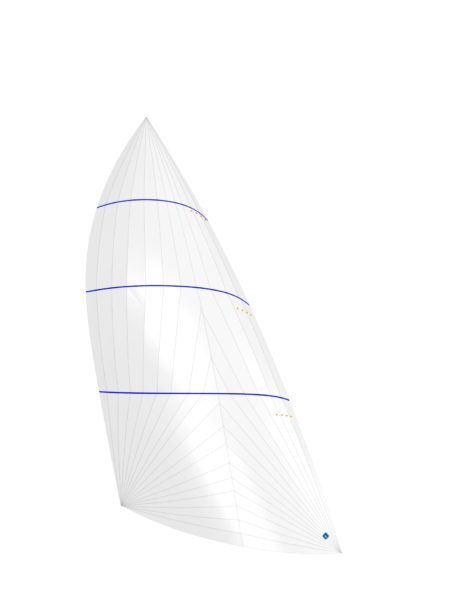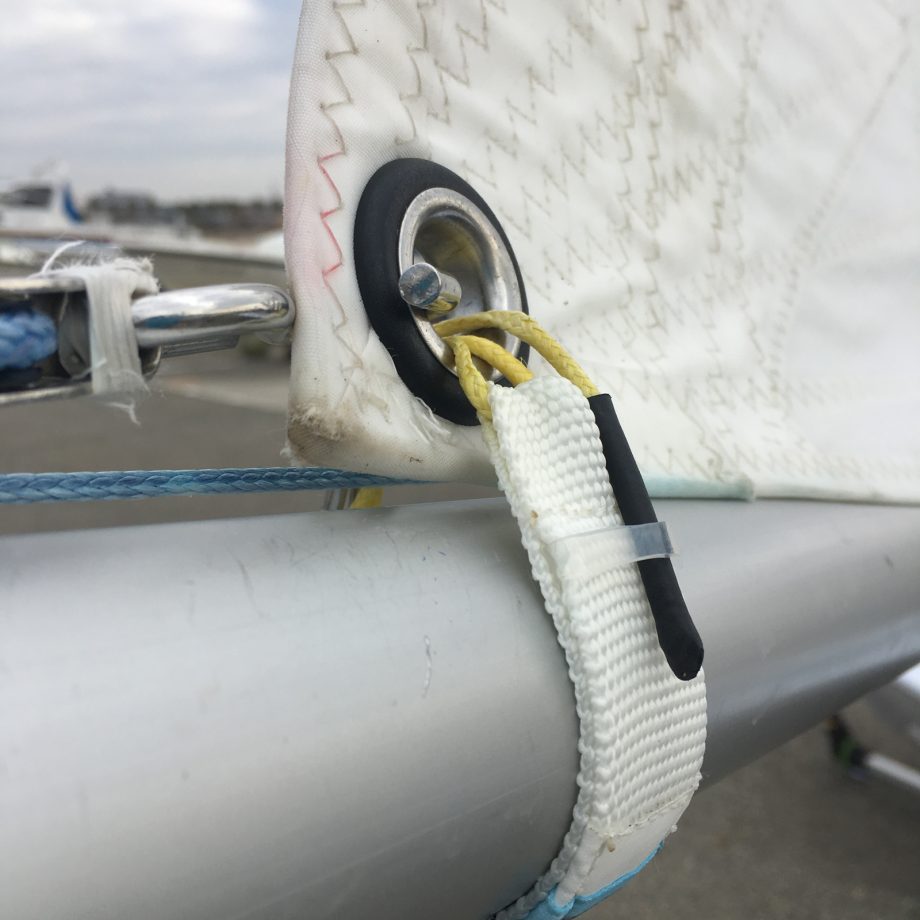
The trim of your sails will be in proportion to either force of lift or push, with a close reach mostly lift and a broad reach composed mostly of pushing force. On the reaches,(IE close, beam and broad), you are combining the principles of lift and push at varying degrees with more lift as you head upwind and more push as you head downwind. I hear you though, what about the points of sail in between? However, we pull the jib and the main in so that they will enhance each other and create a slot between the two to enhance the flow of the wind between them. On the upwind leg, we don't have a sexy little phrase to remind you, because we just pull the sail all the way in. To catch all the wind you can on a wide surface area to push you downwind, you want as much sail out as you can get to catch the wind.
CLEW OF A SAIL HOW TO
If you were to think about the shape of the wind on each leg, the upwind would be shaped like a stream of water coming from a garden hose while the downwind would be shaped like a bucket covering a much wider surface area.Īnd when you think about how to catch wind of each shape, you need a wider surface area to catch all the wind on the downwind leg like a parachute and a more narrow or slot shape to enhance the flow of the wind on the upwind leg, just like the nozzle of the hose.Īccordingly when we trim our sails to downwind, we go with the phrase, “if in doubt, let it out”. On the upwind leg, the wind streams across our sails, while on the downwind leg, the wind fills our sails like a parachute. By understanding the shape of the sail, we can best adjust our sails to catch the shape of the wind. Now that we know the difference between upwind sailing and downwind sailing, we must talk about the shape of the sail.

Accordingly when you are sailing upwind you are italian (due to Marconi’s invention of the triangular sail that lifts the boat) and when you are downwind sailing you are a Pirate.

When we are sailing downwind, the sails are catching wind and pushing the boat downwind. They did not have a great ability to sail upwind because Bernoulli hadn’t quite explained to them at that point that a boat can be lifted upwind instead pushed down wind and Marconi, another guy who revolutionized sailing, hadn’t created the triangular sail yet. Down wind sailing or running is all push and no lift and that’s what powered the pirate boats.īack in the days of Blackbeard and Kidd, boats were square rigged and their sails were rigged perpendicular to the boat so that they could catch the wind and the westerly trade winds could push their boat up the coast to the New World. So to catch their attention I differentiate upwind sailing or lift, by comparing downwind sailing to something they can get jazzed by, pirates. When I describe this subject to kids they could care less about the physics of it all and would most times rather go swimming than learn about the science of sailing. When you are downwind sailing it's all push and no lift. This is all under the lift principle which is mostly what is happening when you are upwind sailing.

With a jib it also needs to have a nice wing shape to it, but in that case it needs to be pulled in concert with the mainsail because it enhances the flow of wind on the backside of the main. That’s why sails need to be kind of stiff and if you pull it in too far, it slows you down and if you let it out too much, it also slows you down. Sounds complicated right? It is.Īll you really need to know is that for a main sail to work, it needs to have a nice fluid promoting shape to it like a smooth airplane wing set on its edge and pointing to the heavens. That force is communicated to the boat through the mast and that energy is transferred to the hull in a lateral direction that is redirected into forward motion through the lateral resistance of the keel on the boat which slips forward like a wet watermelon seed squeezed between your fingers. The difference in speed and inversely pressures of those two streams is converted into force through a principle first described by Swiss Mathematician Daniel Bernoulli. The wind is diverted into two paths around a sail on the forward side and on the back side of the sail. The lift is what makes planes fly and eagles soar. Just as a gull can twitch and flex the leading and trailing edges of a wing to maximize the effect of a passing zephyr, so can you as a sailor squeeze the most from a breeze and translate that into boat speed.īut at its core, a sail operates on two principles, lift and push.


 0 kommentar(er)
0 kommentar(er)
